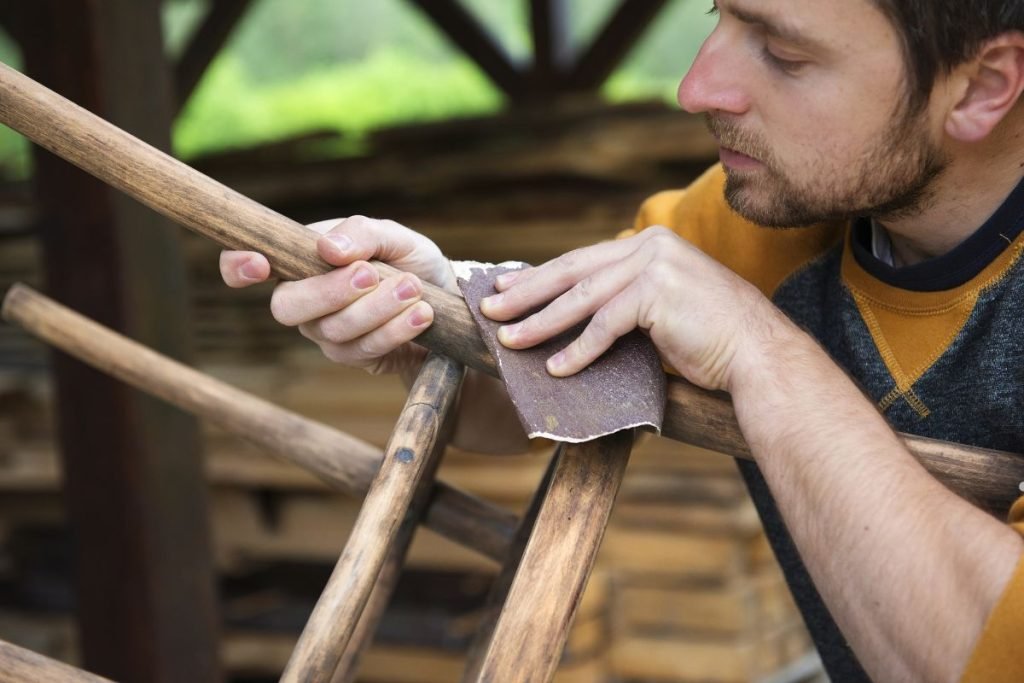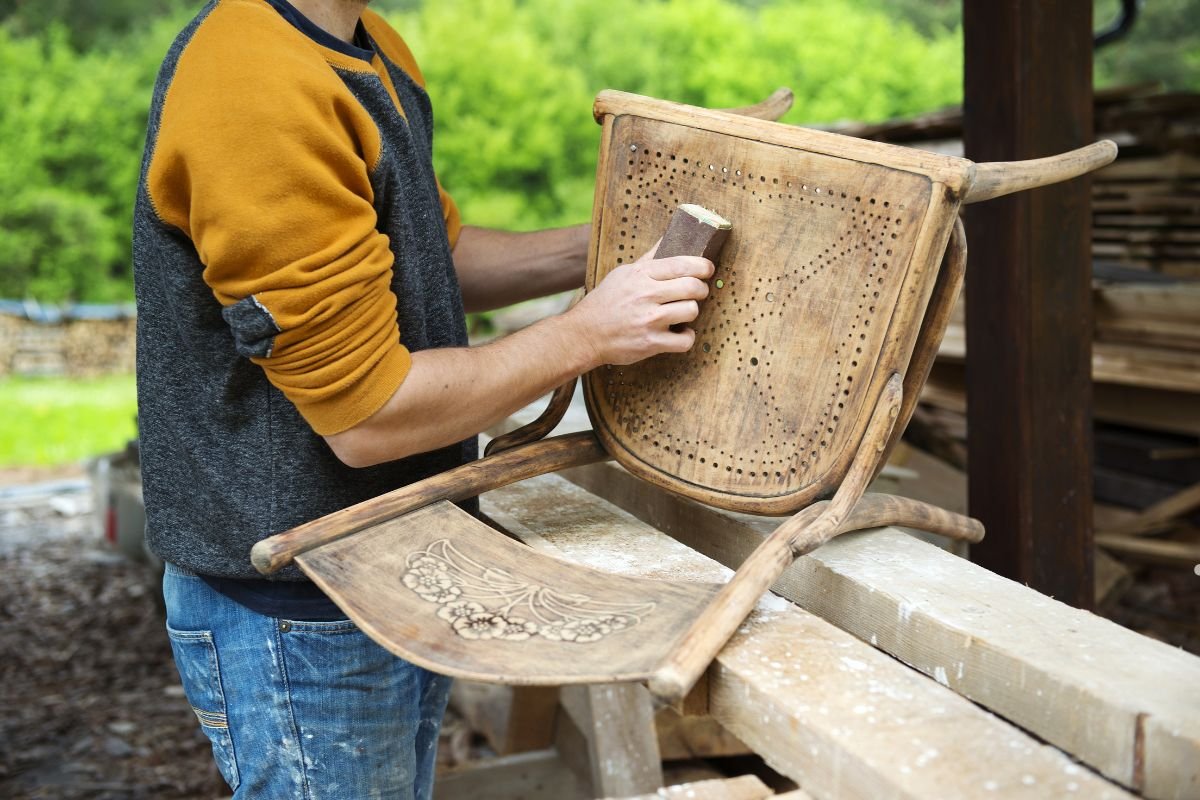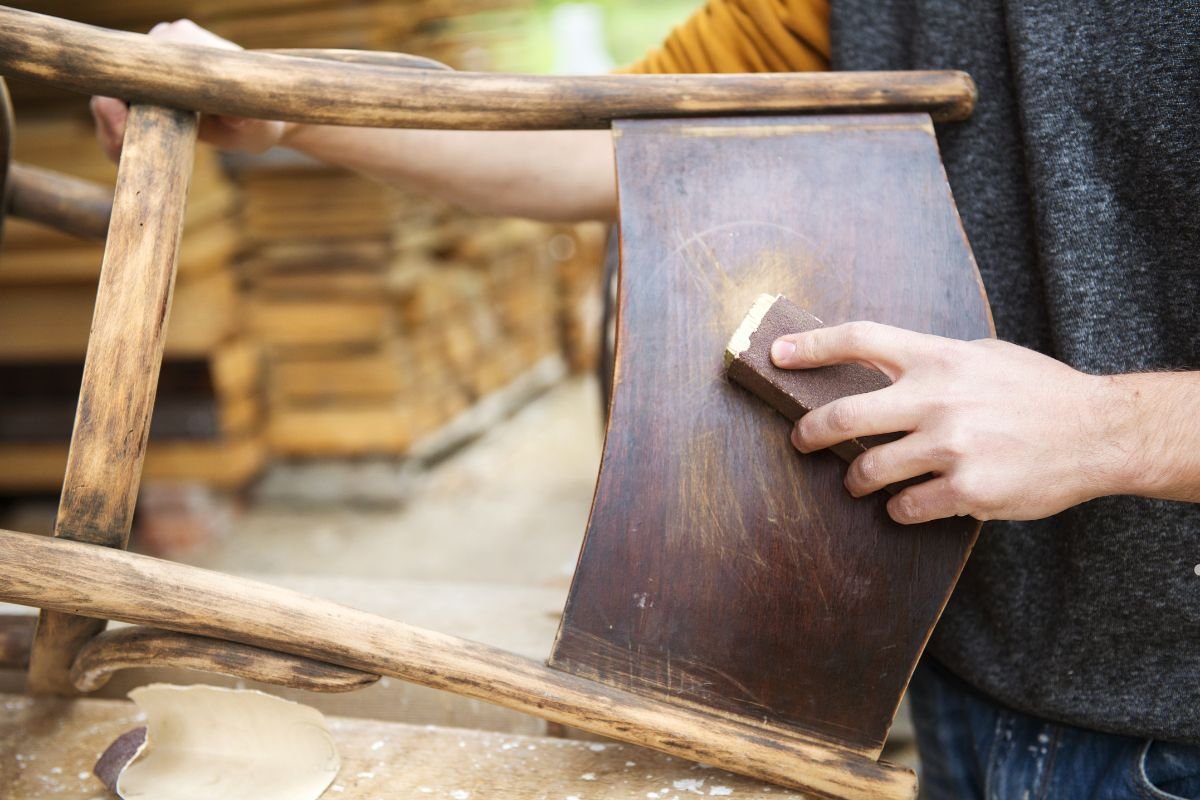
Deciding whether to restore your cherished furniture on-site or in a workshop in San Jose depends on the piece itself, the extent of the damage, and your personal preferences. While on-site restoration offers convenience for minor repairs, workshop restoration provides the ideal environment for comprehensive work. This article explores the pros and cons of both methods to help you make the best choice and, ultimately, bring your furniture back to life.
What is On-Site Furniture Restoration?

On-site furniture restoration involves a technician coming to your San Jose home or office to repair or refinish your furniture. This approach is often used for minor repairs, such as touching up scratches, repairing small dents, or re-gluing loose joints. For more details, check out our previous blog page Furniture Stripping: A Comprehensive Guide for DIYers and Professionals.
Benefits of On-Site Restoration
- Convenience: The biggest advantage is that you don’t have to move your furniture. This is especially helpful for large or heavy pieces.
- Reduced Disruption: The work is typically completed quickly, minimizing disruption to your daily routine.
- Cost-Effective for Minor Repairs: For small jobs, on-site restoration can be more affordable than transporting the furniture to a workshop.
Drawbacks of On-Site Restoration
- Limited Equipment: Technicians may not have access to all the specialized tools and equipment available in a workshop.
- Potential Mess: Sanding and refinishing can create dust and fumes in your home.
- Less Control Over Environment: Humidity and temperature fluctuations can affect the quality of the finish.
When to Choose On-Site Restoration
On-site restoration is a good option for:
- Minor scratches, dents, or water rings
- Loose joints that need to be re-glued
- Touch-ups to existing finishes
Exploring Workshop Furniture Restoration
Workshop furniture restoration involves transporting your furniture to a specialized workshop where skilled artisans can perform a wide range of repairs and refinishing services.
Is your furniture showing its age? Don’t replace it – restore it! Call us today for a consultation and let’s discuss bringing your beloved pieces back to their former glory.”
What is Workshop Furniture Restoration?
In a workshop setting, furniture restorers have access to advanced tools, controlled environments, and a wider range of materials, enabling them to tackle complex restoration projects.
Benefits of Workshop Restoration
- Comprehensive Repairs: Workshops can handle extensive repairs, including structural damage, veneer repair, and complete refinishing.
- Controlled Environment: Workshops offer controlled temperature and humidity, ensuring optimal conditions for refinishing and drying.
- Specialized Equipment: Access to professional-grade equipment, such as spray booths and stripping tanks, ensures a high-quality finish.
Drawbacks of Workshop Restoration
- Inconvenience: You’ll need to arrange for transportation of your furniture to and from the workshop.
- Longer Turnaround Time: More extensive repairs typically take longer to complete in a workshop.
- Higher Cost: Workshop restoration generally costs more than on-site repairs due to the greater scope of work and specialized equipment.
When to Choose Workshop Restoration
Workshop restoration is the best choice for:
- Antique furniture that requires specialized care
- Furniture with significant structural damage
- Complete refinishing or stripping of old finishes
- Veneer repair or replacement
On-Site vs. Workshop: A Detailed Comparison

Choosing between on-site and workshop restoration depends on several key factors.
Comparing the Two Approaches: Key Considerations
- Cost: On-site restoration is typically less expensive for minor repairs, while workshop restoration is more cost-effective for complex projects.
- Time: On-site repairs are usually completed in a few hours, while workshop restoration can take several weeks.
- Scope of Work: On-site services are limited to minor repairs and touch-ups, while workshops can handle extensive restoration projects.
- Environmental Factors: On-site restoration can create dust and fumes in your home, while workshops offer a controlled environment.
- Security: You’ll need to consider the security of your furniture while it’s being transported to and from a workshop.
Factors to Consider When Choosing
Ultimately, the best choice depends on your specific needs and preferences.
Unsure which option is right for your furniture? Call us for a free assessment! We’ll evaluate your piece and recommend the best course of action to restore its beauty.
Making the Right Choice for Your Furniture
- Type of Furniture: Antique furniture often requires the specialized care offered by a workshop. For expert restoration, visit our page: Antique Repair.
- Level of Damage: Minor scratches and dents can be addressed on-site, while significant structural damage requires workshop restoration.
- Budget: On-site restoration is generally more budget-friendly for minor repairs.
- Personal Preferences: Consider your convenience, tolerance for mess, and desired level of restoration.
Finding Reputable Furniture Restoration Services in San Jose
Finding a qualified furniture restorer is crucial for achieving the best results.
How to Find the Best Furniture Restorer in San Jose
- Researching Local Companies: Search online for furniture restoration services in San Jose.
- Checking Reviews and Testimonials: Read online reviews to gauge the quality of service and customer satisfaction.
- Asking for Referrals: Ask friends, family, or neighbors for recommendations.
- Verifying Credentials and Insurance: Ensure the restorer is licensed and insured.
Preparing Your Furniture for Restoration
Proper preparation can help ensure a smooth and successful restoration process.
Ready to get started? Contact us today to schedule your furniture restoration service! We’re dedicated to providing exceptional craftsmanship and customer satisfaction.
Preparing Your Furniture for the Restoration Process
- Cleaning and Documentation: Clean your furniture and take photos of any existing damage.
- Protecting Surroundings: Cover floors and furniture in the work area to protect them from dust and spills.
- Communicating with the Restorer: Clearly communicate your expectations and desired outcome.
Conclusion
Choosing between on-site and workshop furniture restoration is a personal decision that depends on your specific needs and circumstances. By carefully considering the factors outlined in this article, you can make an informed choice and enjoy beautifully restored furniture for years to come. Remember, restoring furniture is not just about fixing damage; it’s about preserving history and creating lasting memories.
